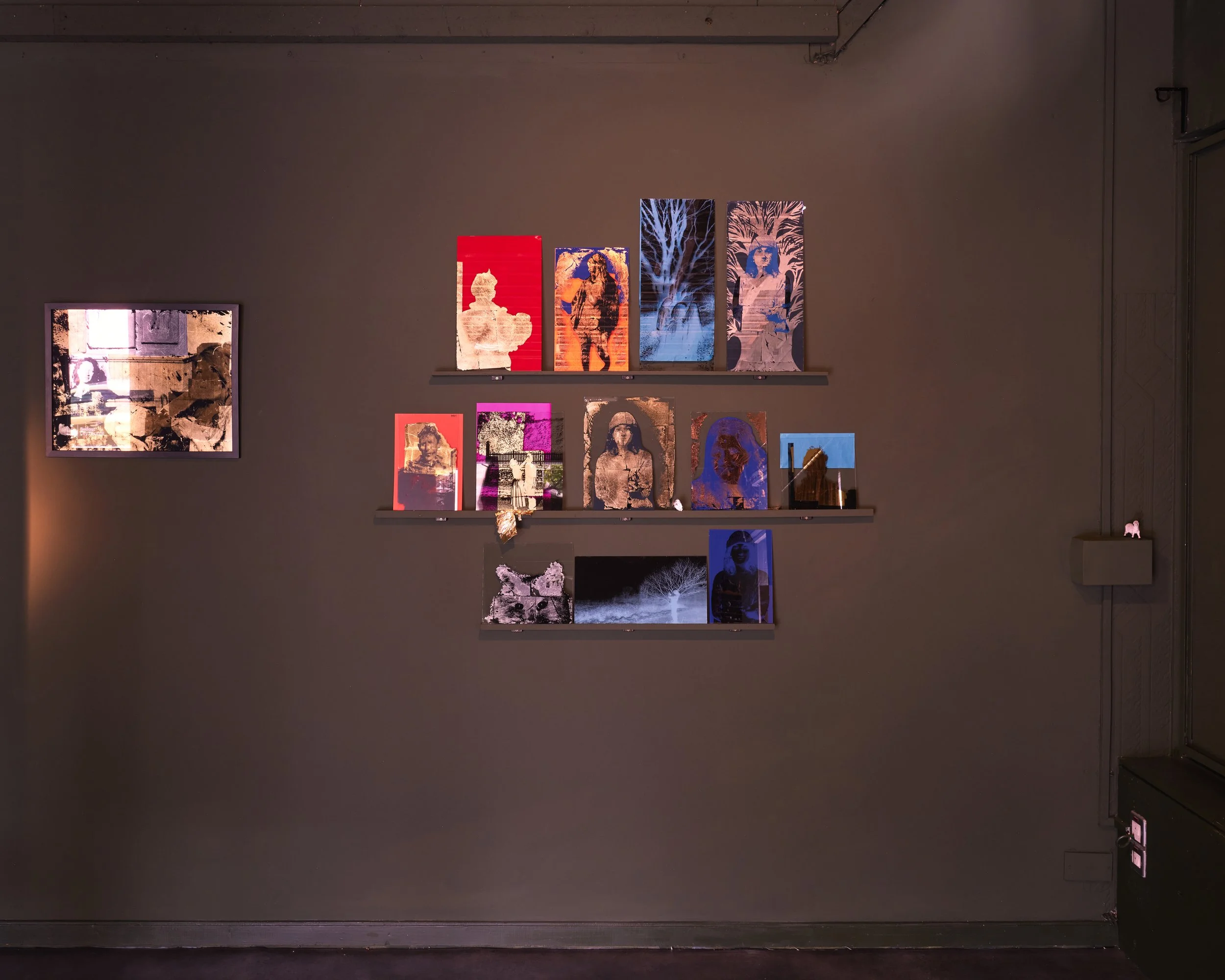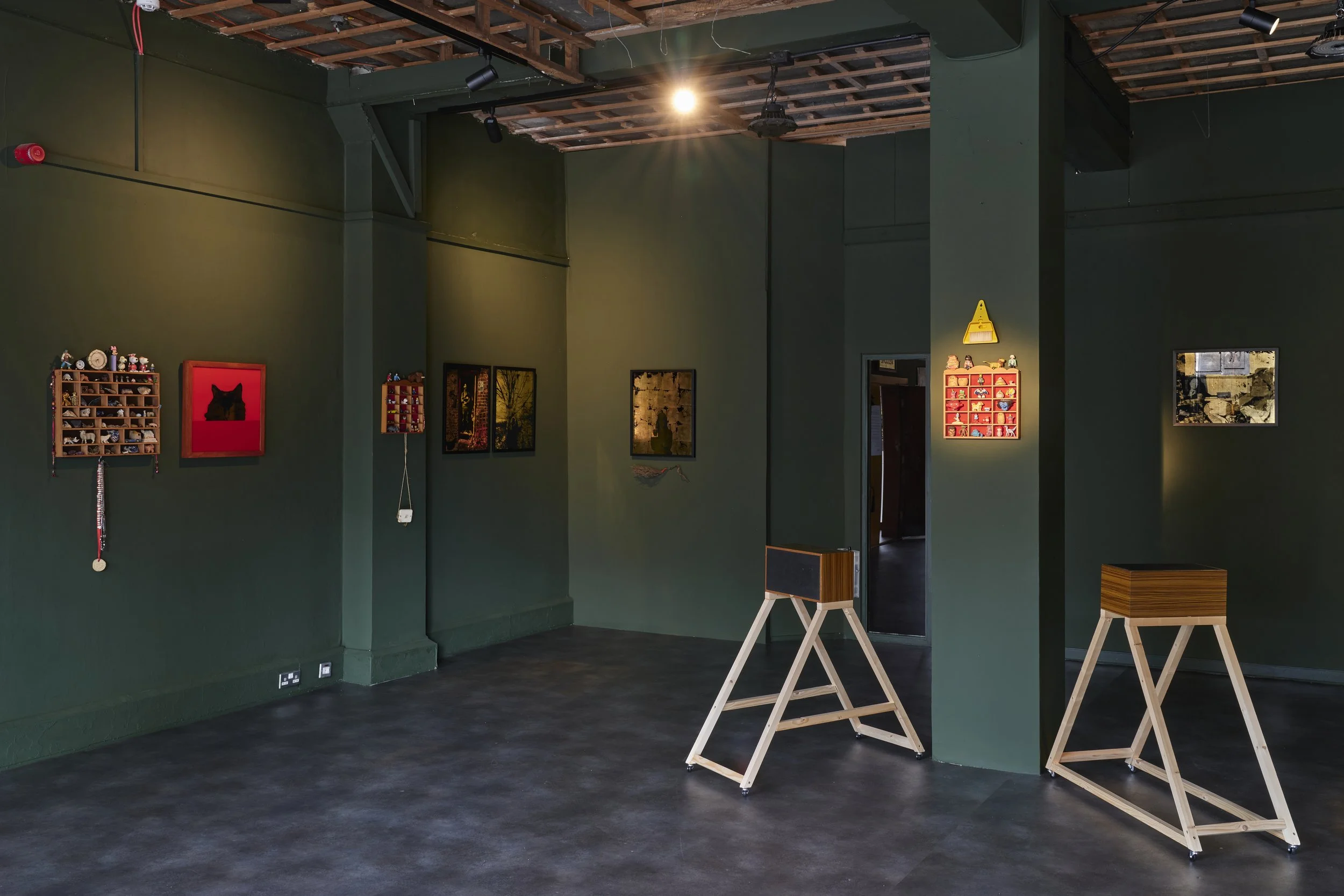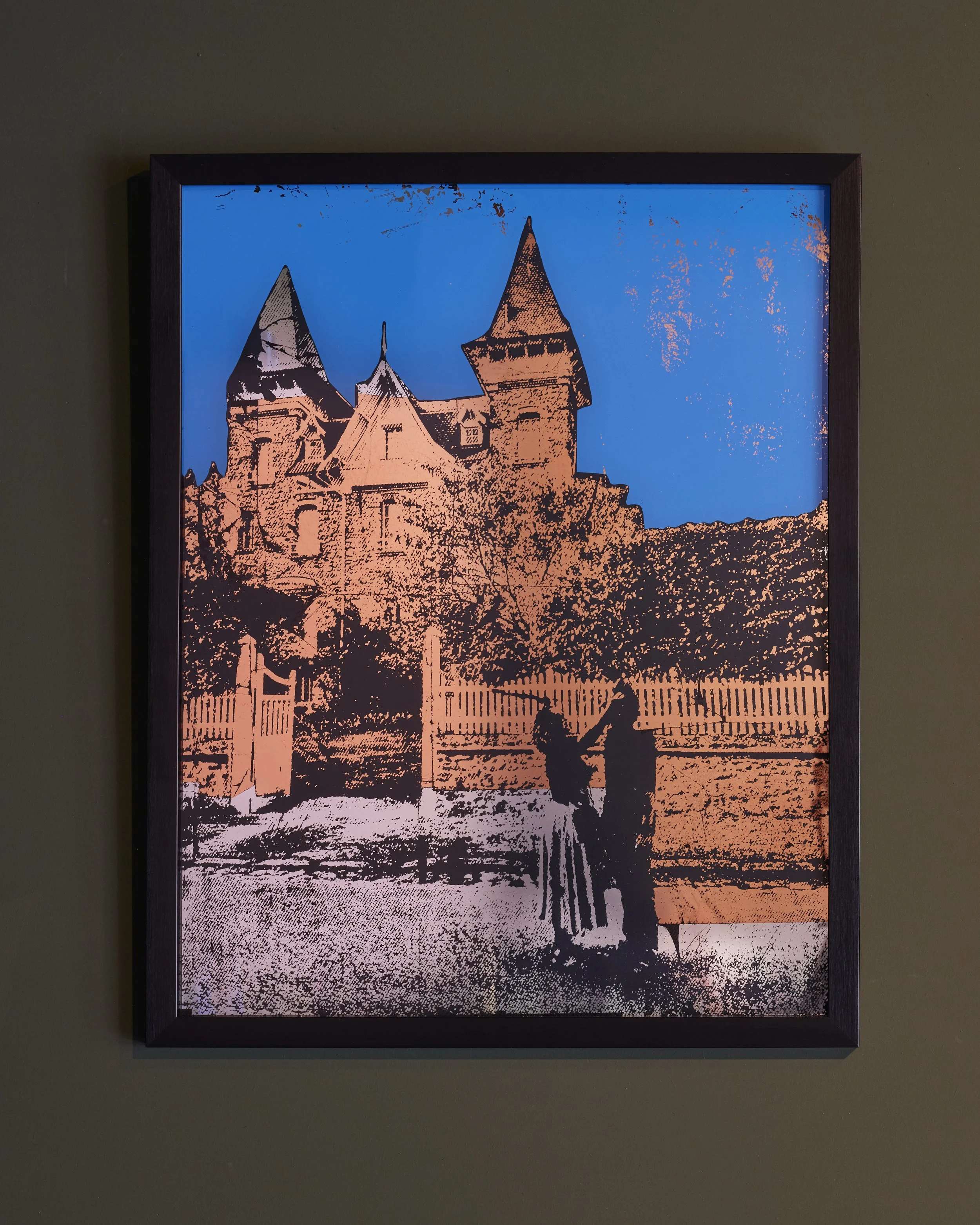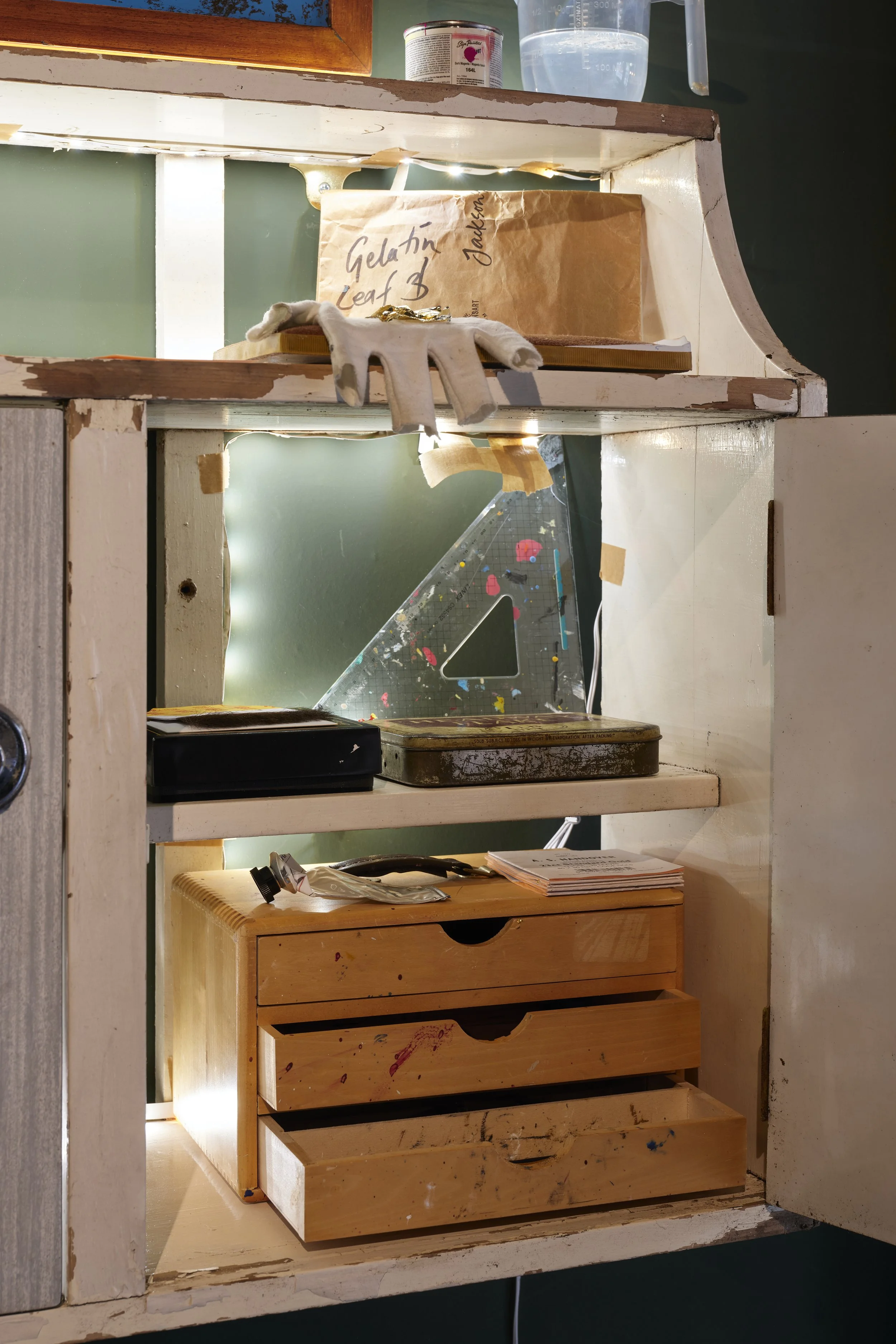LAURA NELSON: SONGLINES
Late Night Art / Late Night Vault
Thurs 3rd October (6–9pm)
Continues 4–9 October (12–6pm)
Songlines
Laura Nelson
Home is where I want to be
But I guess I'm already there
‘This Must Be The Place’. Talking Heads.
I have spread my dreams under your feet;
Tread softly because you tread on my dreams.
‘Aedh Wishes for the Cloths of Heaven’. William Butler Yeats.
Over the last few years, Laura Nelson has immersed herself fully in the art of signwriting, an age-old practice enjoying something of a renaissance in recent years. Her studio is filled with brushes – each dedicated to a specific technique, bristles gently shaped with baby oil to hold the distinctive shapes of rigger, chisel, fitch and sword liner – and miniature pots of 1 Shot lettering enamel, glass panels, silkscreens, sheets of block and casual script, delicate pamphlets of temperamental 23 carat gold leaf and bottles of size. Considering the sheer number of techniques and scripts involved, and equipment and materials to be sourced, Laura has acquired a level of mastery in a remarkably short space of time. This is also indicated in her choice of medium for the current show – reverse glass gilding. Generally viewed as the pinnacle of signwriting techniques, it is an intricate process requiring a very high level of skill. Yet in Songlines, the title of the current show, there is very little signwriting. As we shall see, it is a body of work that employs the language of signwriting to break new ground and bend notions of genre while dealing with profoundly personal subject matter.
Laura toyed initially with the Irish word ‘teaghlach’ as a title for her show. Much like ‘clann’ it means family, but it has a more specific meaning in referring to a sense of the family as a unit or household, a concept that the artist very much wanted to convey with this show of new work. Subsequently, opting for something more immediately understandable to a wider audience, but still wanting to retain the meaning of the Irish word, she turned to song lyrics by the likes of Talking Heads and eventually settled on the concept of songlines. The word refers to the paths across the land (or sometimes the sky) within the animist belief systems of the Aboriginal cultures of Australia. With two very close and relatively recent bereavements, alongside a set of circumstances that could possibly mean having to leave a family home of over ten years (that Nelson has made into an almost living artwork) the other concept of songlines as embodying the connections between individuals and their ancestral lands is particularly significant and poignant.
Surprisingly, given the fact of her 12 years working in the arts, not least driving the creation of a gallery and exhibition programme in her studio at ‘the Vault’, and exhibiting in several group shows – Songlines is Nelson’s first solo show. It is an exhibition that blurs the lines between artworks – in the traditional sense of exhibition/gallery pieces; and works of art – the carefully curated shelves of objects, ornaments, trinkets and souvenirs borrowed directly from Laura’s home. Not to mention the monumental pink piano which formerly dominated the family’s living room (now upgraded to something less imposing, but sorely missed). What first catches the eye, and the light, however, are the former i.e., the ten or so reverse gilded works on glass. Like precious objects in a Coptic or Greek Orthodox church, they shimmer in even the lowest light, reflecting everything in tones of red gold, green gold, copper, silver and various juicy shades of enamel. It is an effect one’s eyes and brain can handle, but one which is almost impossible to photograph and therefore the works necessitate being experienced and appreciated in person. Each piece is based on photographs taken by Laura, or a family member, on various ‘adventures’: forest and mountain walks, trips to the coast and holidays, or at home. Nelson’s children are grown up, but these outings are a tradition they have retained and still enjoy as a family unit. Like the objects on display, each image I suspect is a jumping-off point for memories of feelings and conversations. Like the objects, each one acts like a personal visual diary entry, yet the works have a resonance that moves beyond the artist’s personal family.
The gold leaf has been applied in the traditional manner but with the added complexity of silkscreen printing in order to translate the photographic imagery via bitmapping, inverting and flipping. It is a complex and time-consuming procedure that Laura employs masterfully, while at the same time embracing the quirks of handling fiddly and delicate materials. Cracks and patches of non-gilded areas, which in the practice of pure signwriting would be buffed or scratched away by the artist and additional leaf applied, are here folded into each piece, emphasised even with the subsequent reverse application of black or blue enamel paint. It somehow makes the pieces, conversely, simultaneously timeless and modern. One particular piece depicts Nelson’s son, gazing out at the viewer with a subtle expression of bemusement and cupping a handful of mushrooms. It is a portrait but also, given the relative size of the subject within the composition, a figure in a landscape, originally a forest. Yet here the landscape framing the figure has been replaced with sheets of gold leaf, the hairline cracks emphasised with black back painting suggesting branches and trees, and in one small area on the left forming concentric rings like tree rings or a stylised sun. From across the room, the pattern reminds one of the bark of a silver birch. In another piece the large expanse of gold, silhouetting a bare tree and bathing the figures in backlit halos, is a crisp winter sunlight.
Gold has a long history in the history of art in painting, sculpture and illuminated manuscripts in Western and Eastern art. Like lapis lazuli, the blue rock mined in Afghanistan, gold was a precious material reserved for the most sumptuous manuscripts, representations of divinities and saints in the form of panel paintings and icons. As discussed, Nelson’s use of the material stems from her signwriting training, but its application here to intimate family portraits elevates them far beyond the original photographs. The care and attention the technique requires turns these memories and private family moments into precious objects themselves, preserving moments for the future. Laura thinks that the works are so deeply personal, and almost cathartic, that they may well end up hanging alongside the Playmobil figures, finger puppets, carved turnips, certificates and other ephemera and ornaments. They will become new entries in an inventory of tender memories; new precious objects, indeed songlines, celebrating family and time – a lifetime – shared together. It is hard to think of more noble subjects to hold on to and honour in this way. Memories and family; in the end what else really matters?
Jonathan Brennan. October 2024.
Photos by Simon Mills
























